Written by John Edward Betancourt 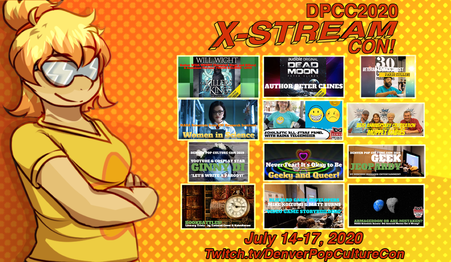 Make no mistake about it, 2020 has been a year filled to the brim with unexpected surprises. For our lives have been turned upside down, and everything we were looking forward to this year event wise, has either been cancelled or postponed or is hanging up the air as we wait to see where the Covid-19 Pandemic is going to take us in the months to come. And this outright uncertainty and unease, have motivated all of us to seek out anything and everything pop culture wise that can take our minds off of the sour news that we receive every single day and thankfully, Colorado’s biggest convention, Denver Pop Culture Con, is fully aware of everyone’s need for escape and entertaining fun. Which is why this year’s con is going virtual. Since it affords fans of this con a chance to enjoy the nerdiness that they’ve been craving since last year’s event and well, DPCC has definitely lined up some wonderful programming for us to enjoy in the comfort of our homes over the next few days. For this virtual con is set to take place from July 14 to July 17 and during that time we will be treated to all kinds of live interviews, presentations and demonstrations. Which will include some never before streamed panels, the kind that feature some nerdy talk on the real life science behind sci-fi movies that feature asteroids, how LGBTQ+ individuals are included in pop culture communities and a reunion of the cast of Muppet Babies to celebrate the 35th Anniversary of that iconic show. But there was mention of live interview sessions and there are some significant ones happening over the course of this four-day event. Tuesday for instance will feature a little something for the cosplayer in all of us by way of an at home cosplay fabrication panel, one where Brad Frikkers from Reynolds Advanced Materials will answer cosplay related questions in between teaching us some costuming tricks. As for folks who want to learn a little more about marketing and writing techniques, there will be a Q&A session with renowned author Peter Clines (14, The Fold, Paradox Bound) on Wednesday. And the learning doesn’t end with those two panels since Thursday features a panel on how you build stories for video games with the folks from Blizzard Entertainment and Comic Creator Paris Cullins will spend a little time breaking down the value of learning with comics. However, while all of those panels are going to be amazing in their own right, Friday’s Q&A session definitely caught this writer’s eye, simply because it is safe to say that this is one, we haven’t seen all that often at conventions. For Fantasy author Will Wright and Audible narrator Travis Baldree will take a little time to discuss how audiobooks are made, and with this becoming a growing segment of the creative world, it should be quite interesting to learn what these gentlemen have to say about this industry and all that it has to offer creatives everywhere. But while we’ve talked at length about some of the highlights of this show, and what to expect on what day, there is one critical element we still need to discuss in regard to this digital convention. Specifically, how the heck does one enjoy this phenomenal event? Well, all you need to do to ‘attend’ this digital convention, is sign up for the con here and tune into Denver Pop Culture Con’s Twitch TV Channel at 1 p.m. Mountain Standard Time on Tuesday afternoon. And as an added bonus, this week’s lineup of panels and general nerdiness doesn’t require a massive commitment of your time. For no daily session exceeds three hours of content and to top it all off, this event is absolutely free. So, all you need to do, is bring your passion to the table and kick back and enjoy the ride, and it really is quite wonderful to see DPCC do their best to bring together the nerdy community during these trying times, and we will see all of you in the digital frontier when X-Stream Con gets underway, tomorrow afternoon!
0 Comments
Written by Juanita ‘Obi-Juan’ Bonner 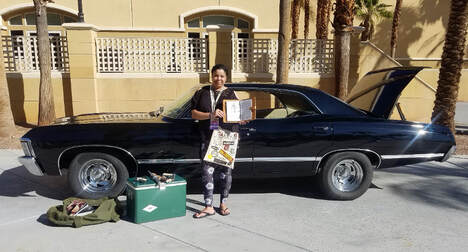 Like so many of my fellow Supernatural fans, I have been watching the show eb and flow over its impressive 15-year run. Crying, screaming and laughing at my television for years has become routine, but it’s only been the last few that I’ve interacted with the well-known Supernatural Family via social media and the internet. Even more so once I started writing Supernatural focused articles as well as covering the final season each week with Nerds That Geek. However, unlike so many fans out there, I have never attended a Supernatural Convention. Until now!! And I’m here to break down how this wonderful event (presented by Creation Entertainment) not only made me a stronger fan of the show but a welcomed member of the Supernatural Family and an even bigger advocate of fandom in general. From the first time I watched a fan made Supernatural Con video I dreamed of going to one of these conventions. When I finally decided to work towards getting to one, the announcement that Season 15 would be the last came not long after. **SIGH** Adding fuel to my “must go” fire, I chose the Las Vegas Con, the biggest of all the others. Four whole days! YES!! From there, diving into all the deets on the Creation Entertainment site was thrilling, but a little overwhelming. There are a lot of choices. Gold, Silver and Copper packages, as well as single day and general admission tickets. The higher the tier, the more you get AND pay. Not to mention there were several fees for side events with individual actors, personal photo ops and auctioned meet and greets to pour over. Like most of us, on a budget, I opted for the Copper Package which was a happy middle ground that guaranteed me an assigned seat all four days and free entrance to a couple events. There were a few side events I would have paid extra to attend, like Ruth’s Witching Hour or Kim and Briana’s Pajama Party, but they sold out quickly. Additionally, having not been on a solo vacation in years, I chose extras outside of the convention and went for a spa day, top notch food and a unique Supernatural inspired tattoo to round out the whole experience. Thanks Eli and Count’s Tattoo!! Any extra money I spent at the Con, was on merchandise and personal pictures with a Baby replica. I also got one autograph and selfie with Ruth Connell (Rowena) to make up for not being able to attend her Witching Hour event. ALL TOTALLY WORTH IT!! Basically, there is something for just about any budget at a Supernatural Con. For most, getting there, lodging and food are the biggest hurdles. This is often the same for any Con, but I will point out that food and drink in Las Vegas is completely outrageous!! However, once you’re there, you can immerse yourself in a very intimate world set apart from the loud casino environment. The closer you get to the designated Con area, the bigger your smile will become. And once you have your badge, you’re free to wander in and out of the stage area which is preceded by the free merchandise and autograph area. I was in Supernatural heaven and spoke with several fans, vendors and event coordinators. And all throughout, I heard and felt the same vibe…love!! If I had a question or was looking for something specific, anyone in earshot was happy to help. If I was trying to take a selfie with a screen prop, someone would offer to take it for me to which I always responded in kind. Even before the Con started, I rode the airport shuttle with attendees, newbies and veterans alike, which was a blast. Overall, virtually everyone I encountered that was there for the Con were fun loving, open and inviting, making the Supernatural Family vibe eminent throughout!! (#SPNFamily yo!) As always, the Con was hosted by Rob Benedict (Chuck/God) and his fan favorite band Louden Swain. And in the midst of the rising Coronavirus outbreak, they opened with MC Hammer’s Can’t Touch This, sending waves of laughter throughout the crowd since Creation Entertainment instituted a “no touching” policy just prior to the event. The band knew comedy was needed more than ever, particularly for those who paid for professional photo ops expecting to hug their favorite character/actor, which is the norm any other time. Despite the ban, even photo ops (professional and selfies) were made fun by people coming up with creative ways to take their photo, effectively making the event even more memorable in its own way. Richard Speight Jr, (Gabriel/Loki) ever the counterpart to Rob as MC, was delayed due to finalizing his direction of one of the final Supernatural episodes. Obviously, a forgivable offense (LOL!). Yet, he made if for the band’s traditional Saturday Night Special concert and rounded out the Con hosting with Rob all day Sunday and doing autographs and photo ops too. NICE!! 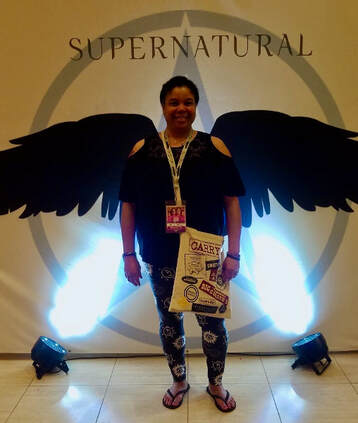 Another very nice touch was the fact that many of the Con guests, aside from performing panels, sat at tables within the vendor area for autographs and selfies. Only the big names, Jared Padalecki (Sam Winchester), Jensen Ackles (Dean Winchester), Misha Collins (Castiel) and Alexander Calvert (Jack Kline), were in private areas for their autographs, and rightfully so. Still, virtually all of the other guests were freely accessible to watch and take photos of while they interacted with fans. Fees for autographs and selfies were similar to other cons, but the experience seemed considerably more personal and intimate. The vendors were a mix of original artists, fans, charities, and commercial merch who worked right alongside actors all in one room. It felt simple, personal, inviting and awesome. I loved it (insert heart eyes emoji here)!! And speaking of panels, oh were they great!! I mean. When I booked this Con, as I’m sure most do, I envisioned seeing Jared, Jensen and Misha. Of course, their panels were fantastic, but they were on Saturday (Misha) and Sunday evening and actually turned out to be the icing on an already sweet and satisfying cake. No one phoned it in! Each and every guest was present, happy to be there, and thankful to the fans. And yes, I know many panels are like that, as they should be! But, many of these folks have been doing these panels for years now which isn’t just a testament to the fan base, but to the artists as well. A fandom con as beloved as Supernatural is a two-way street and I assure you these panels are some of the most memorable group moments of the entire Con. Even newbies to the circuit, like Matthew Lillard (Shaggy) and Grey Griffin (Daphne), for their voices in 13.16: ‘ScoobyNatural’, were fantastic!! Some of my favorites actually. And Matthew went out of his way, more than once, to remark on the unique atmosphere within a Supernatural Con. Alongside his testament, this made my experience feel very organic for sure!! Other personal favorites include DJ Qualls (Garth), Ruth Connell (Rowena) and Mark Pellegrino (Lucifer), Kim Rhodes (Jody Mills) and Briana Buckmaster (Donna Hanscum), Julian Richings (Death) and recent stroke victim currently in recovery, Tim Omundson (Cain). And darn it, I will forever regret not having Tim sign my mini First Blade replica. **SIGH** The only drawback was the sound seemed to be a bit off. Sometimes it was hard to hear, particularly if you were on the side of the stage in line to ask questions, which I was. Five times to be exact (WOOT!!). But more to the positive, I got to ask questions, laughed, listened to life stories and relived moments from the show with some of my favorite character actors and fellow fans. It was absolutely glorious!! Finally, in between some of the panels there were group participation Supernatural trivia games, auctions, and even a Supernatural Family Con staple – a group sing with Louden Swain, dubbed Vendor Room Jam, out in one of the convention hallways. All of which drew specific crowds while others dispersed to attend photo ops, shop, or just hang out. For the entire four days, I found unique and endearing things from virtually every angle to love about this Con. And overall, the entire experience was a happy one as the famed Supernatural Family welcomed this Supernatural Con newcomer with open arms!! I would graciously attend another Supernatural Con and thankfully, because the Cons aren’t expected to end with the series, I just might!! Especially if I get a chance to get that First Blade replica signed, right! Well, there you have it! My Supernatural Las Vegas Con 2020 experience. Did you attend this Con? If so, what did you think? Please let me know in the comments below or reach out to me @obi_juanita on Twitter. If anyone is interested in viewing videos or seeing more details for this Con, please visit Salute to Supernatural Las Vegas 2020 here. And keep an eye out for my remaining Supernatural Season 15 articles posted every Monday ahead of a new episode. Until next time… go Team Free Will!! Written by John Edward Betancourt 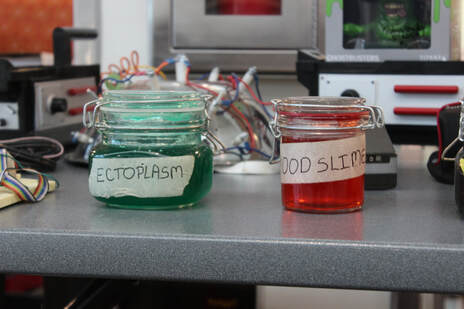 Sometimes, the changing of the seasons makes one wistful and reflective, and as the convention season begins its proverbial sunset in 2019 and summer prepares to make way for fall, I find myself pondering upon all the cons I’ve attended this year. But as I reflect upon another magnificent year of nerdiness and autographs and vendor rooms, I also find myself thinking about what exactly it is that draws me to a particular convention. Because I did attend far fewer cons this year, simply because not every single one of them had me as excited as the handful that I went to. That’s not meant to be an insult by any means, because I know I’m not alone in picking and choosing where I spend my time since there are so many cons to attend in the state of Colorado. But to have the fun I had this year and find great joy in the ones that I attended, means that the ‘chosen ones’ were truly something special. Which really begs the questions, what is it that keeps us coming back to a particular con year after year? What is it they do that is so supremely unique and special? Well I’d wager that results vary based on an individual’s nerdy needs but for me, it comes down to two key elements; the experience as a whole and a sense of belonging. Which is why I’m such a fan of Fort Collins Comic Con because it accomplishes both of those things in my mind. For it creates a grandiose experience by prompting myself and my friends to plan for a baby road trip up north, the kind that means snacks and drinks and music and good conversation and that in turn, builds anticipation for FCCC since the topic eventually turns to the con and what we will find there, prompting one to count down the minutes until you see the Fort Collins exit on the highway and let’s be honest, what nerd doesn’t feel butterflies as they get closer and closer to their geeky mecca for the weekend? But it is what causes those butterflies that matters the most since the con itself is what we live for, especially when it feels like you belong there and that’s really the best part of Fort Collins Comic Con. Because the instant I walk through those doors everything feels like home, and that’s compounded by the fact that I have old friends to visit with once I step onto the vendor room floor and well, you can’t ask for much more than that from a convention. Because that sense of wonder is what we all experienced at our first convention, and it’s one we wish to replicate when we go to a new one and any event that can make that happen is worth its weight in gold in my opinion, and that’s why I keep taking the time to come back to this con year after year. Because it just reminds us of why we go to conventions in the first place, and its down-home feel and relaxed environment make it a mid con-season palate cleanser. The kind that re-energizes a con goer and gets you ready to roll when it comes to whatever show is on your agenda next and that’s why this convention is important in its own right. For in the midst of a world of conventions that cater to every sub-genre and topic known to nerds and geeks, it’s necessity to have one that reinforces our love of fandoms and conventions and everything in-between and that’s why I’m thankful we have Fort Collins Comic Con in our proud state, since it accomplishes all those things, and I’ll definitely be counting down the days until it returns next year. Written by Shae Rufe 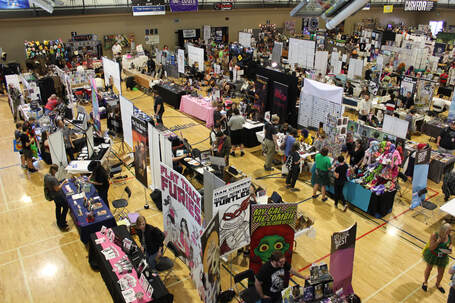 Last weekend we got to experience the wonder that is Fort Collins Comic Con! With Denver Pop Culture Con still fresh on our pallets from just a few months ago, FCCC is a lovely refresher. With its home grown feel and its family friendly environment, FCCC was literally like being at a mini DPCC. Now, it should be said that I am not from a small town and I am not really used to small towns, I always thought Fort Collins was a rather huge city with its college town feel, and so I was expecting something very similar to Denver. Yet, Fort Collins isn’t like Denver at all. It’s a wonderful, smaller, quieter, much ‘homier’ place than the massive city many of us here in Colorado call home. FCCC really encompasses the feel of their town and that made it one of the best Con experiences I have ever had. The Con itself is not massive and I absolutely love that fact. Granted, there are a lot of upsides to a large Con, yet there’s always something missing. My first experience with conventions wasn’t until I was 15 and they were hosted at smaller venues. FCCC really brought me back to the very beginning of my Con going career. It was a much more intimate affair and offered a lot more one on one time with artists, guests, and other con goers. I loved being able to talk to artists more about their works and was able to really take my time. The panels were also smaller and offered access for everyone. There was no waiting in a massive line for a chance at a panel just to be denied at the last second, which sadly has happened, especially at out of state cons. The atmosphere was very laid back and reminiscent of my childhood. Don’t let the size fool you, however, as FCCC brought its A game. Families were encouraged to attend and were in abundance with kids of all ages running about and being exposed to the many nerdy things their parents loved, local and beloved artists were there with their latest and greatest works; and the Special Guest list pulled no punches as fans old and new got to meet their heroes. Above all, FCCC had the kind of feel about it that has you making friends with complete strangers as you bond over your favorite show, comic, and/or even a newly discovered POP figure. This con has so much to offer and I absolutely cannot wait to see what it brings next year. Admittedly, it’ll be hard to top this year’s experience, but I’m sure the con is up to the challenge. Written by John Edward Betancourt 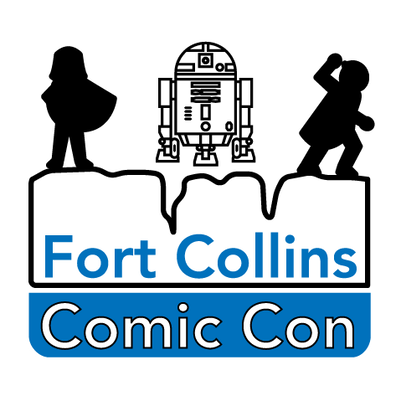 When you take a moment to really think about it, we go to convention for two key reasons. First and foremost, we love the feeling they provide us with, as though we’ve stepped through the doors of a surrogate home where our nerdy beliefs are embraced and celebrated, and we also go to conventions to share said beliefs with our friends and other like-minded individuals. Oddly enough, as the con scene continues to grow and new conventions seemingly are popping up every single day, asking for our time and geekiness, I’m coming to find that reason number two is becoming harder to accomplish as time goes on. Simply because, when you have so many conventions to choose from and hit up, your time and focus are dedicated to getting through your own personal checklist. For there are guests to see, items to purchase and a schedule to keep and that doesn’t quite allow for item number two to get handled in slightest. I mean sure, we say hi to our friends and discuss the awesomeness of the con, but our ability to really sit down and chat with them and get that ‘hangout’ feeling is diminished when the con is too large or you’re hitting up another one on Sunday and that’s why, I’m so glad there are conventions out there that are designed to remove the hustle and bustle mentality surrounding these events, and one such con that works hard to create to that down home feel and relaxed environment is kicking off this weekend in Northern Colorado. For the time has come again for fans to attend Fort Collins Comic Con and this is a convention that I often praise for the two key reasons that I just outlined a moment ago. Because it really does feel like a place to just hang out with your friends and relax while you take in the nerdiness surrounding you on the con floor and that’s really why I love this convention through and through. Because every year I’ve attended it, I’m able to just kick back and chat it up with people I know, and there’s no pressure to come back later or offer to do lunch another time because I have so much to do. It’s all about catching up and celebrating the latest episode or movie you enjoyed and being your nerdy self in a family friendly environment. But, what makes FCCC so special is that it is more than a mere hangout weekend, because there is plenty to see and do every time I’m there, and I love how every single year they bring in a dynamic range of guests, since you’ll find fantastic local and regional artists such as Jason Meents or Nathaniel Hamel present over the weekend. Or, if you’re all about voice acting, the legendary Nikki Rapp will be in attendance at this event, as will some seasoned artistic pros such as Greg Guler and Ron Fortier and of course, you can never go wrong with getting your learn on at a con and Erin Macdonald, PhD will be there to help educate everyone on the wonders of the universe. In the end, the bottom line is that conventions need to be all about the fun, and that’s precisely what Fort Collins Comic Con is all about. They just want nerds and geeks of all ages and walks of life to gather together for a weekend and do what they do best, nerd out, and enjoy themselves in doing so and that’s precisely why I’m excited to attend this convention once again and if by chance you’re curious to give it a look as well, then head on over to FCCC’s website and pick up your tickets and I hope to see all of you, at Fort Collins Comic Con this upcoming weekend. Denver Pop Culture Con 2019 Panel Spotlight: Take an Idea from Concept to Creation – HBO’s ‘Asunda’8/13/2019 Written by Tim Girard 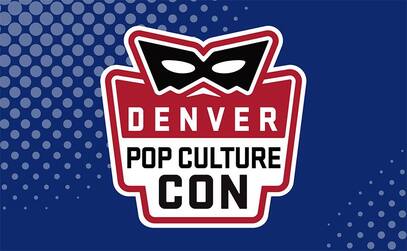 Take an Idea from Concept to Creation - HBO's ‘Asunda’ Sunday June 2, 2019 4:30 pm to 5:20 pm DPCCP 1 Happy Harbor (Comics) How to take an idea from concept to creation by HBO’s ‘Asunda’ creator and Executive Producer, and Stranger Comics CEO Sebastian A. Jones creator of ‘Niobe’ and ‘The Untamed’, and the Executive Producer and writer of HBO’s new ‘World of Asunda’ series will share exclusive art and offer insight on how to take an idea from concept to creation (without selling your soul)! Using sneak peeks and sharing firsthand experience he will share tips and tools in this “How to” Panel. For young aspiring creators and fans the following questions seem to be the most frequent: How do I start? Where do I start? For how long? And how do I take a comic to television/film? Stranger Comics President Sebastian has lectured at universities worldwide. From personal experiences he will share tips on how an independent creator can make it happen while sharing first ever looks at his new comics, as part of the ‘Asunda’ series picked up by HBO. If you want to know trade secrets, this is a panel not to be missed and EVERYONE will have a chance to win free books! Panelist: Sebastian Jones Note: at the time of this panel, I had not read any of the comics. On the first day of DPCC (Friday), I purchased ‘The Untamed Vol. 1: A Sinner’s Prayer’, and quickly flipped through it later that night. On Saturday, I purchased ‘The Untamed Vol. 2: Killing Floor, Niobe: She Is Life’, ‘Dusu: Path of the Ancient’, ‘Erathune’ (all trade paperbacks). Before writing this article, I read’ The Untamed Vol. 1: A Sinner’s Prayer’, ‘The Untamed Vol. 2: Killing Floor’, and ‘Niobe: She is Life’, so that my writing would be better informed. On Sunday evening, near the end of Denver Pop Culture Con 2019, Sebastian Jones of Stranger Comics shared some inspiration with us and clued us in on how he created The Untamed and Niobe, two of the comic book series set in his World of Asunda, soon to be an HBO series. According to Sebastian, the first season of Asunda will be based on The Untamed, which is where his epic begins. The first volume, A Sinner’s Prayer, “is a tale of retribution and redemption. A bad man stuck in purgatory makes a deal with the devil. (“I was given a second chance in death. Vengeance was offered and I was quick to accept.”) He is given seven days to take revenge on his killers, including his brother, his lover, and a young con-man who he reared as his son. Conflict arises when lust for his lover steers him from his path of vengeance, and hate is tempered by a young girl (Niobe) who reminds him of his daughter. She acts as his conscience and ultimately his salvation.” The story continues in The Untamed: Killing Floor (the subtitle is based on the song “Hard Time Killing Floor Blues”), and then Niobe, who was introduced in The Untamed: A Sinner’s Prayer, stars in her own solo series Niobe: She is Life, which is the first major comic book with a black female lead. According to Viola Davis in her forward for Niobe (as well as her tweet), “We all have a Niobe inside ourselves, and it’s time to let her roar.” Sebastian told us that creating an independent property like this and having it get this far is no easy task: if you want to do this, you have to be a hustler. Also, you should strive to “do something timeless, NOT a hashtag.” Sebastian’s first big piece of advice was to stay off social media. Your first response might be, “how can he be against social media? What about that Viola Davis tweet?” That’s exactly what he thought you would say. Do you know how many more comic book sales they got as a result of the Viola Davis tweet? None. Plenty of people liked it and retweeted it, but no one bought any of the comics as a result of it. Instead of spending 3 hours a day on social media, he says that you should be spending those 3 hours on your creative project. If you want to create a comic and one day turn it into a film or TV show, you may ask yourself: (aside from staying off social media) “where do I start?” Sebastian laid out four key concepts: (1) The idea, (2) The script / project, (3) The presentation, (4) Is this a business? The idea is king/queen. For your idea, start with the big picture. What are some of the themes of your story? Is it an origin story? Is it about redemption? Hope? Does it feature the elements? Flight? Sebastian’s mother always says to write what you know (but if you want to write about things that you don’t know about, then collaborate with people who know more than you do). You can draw on your home life and experiences, and also all forms of art medium to be inspired (books, visual art, films, music, etc.). For Sebastian, it was the films of Akira Kurosawa (especially Seven Samurai) and Sergio Leone, and music such as ODB: Return to the 36 Chambers, Cymande, Freddie Hubbard: Hub-Tones, Aaron Copland: Billy the Kid and Rodeo, Alice Coltrane featuring Pharoah Sanders: Journey in Satchidananda, and Henryk Gorecki: Symphony of Sorrowful Songs (he learned from the masters). Once you have taken in all of your inspiration, Sebastian suggests that you “...let it all go and create… something that will obliterate mediocrity. Something that will challenge the status quo. An icon.” Which brings us to the hero. Who is she/he? What is her/his soundtrack/leitmotif? (Is it 1960’s Spider-Man or 2013 Man of Steel?) How does she/he walk, dance, eat, and sleep? Where does she/he dwell? (In the light or in the shadows?) What does her/his voice sound like? (Like the Dark Knight or Eartha Kitt?) Does she/he have a color of significance? What are her/his firsts? Probably most important is “the rise and fall and rise of your hero - We build them up to break them, only to see them rise again… stronger.” Think of examples of this in your own life: “Key moments are what made you and what broke you.” Now that you have your idea, your hero, and an idea of what their journey is, you need structure. You need to “know the story you are telling.” Is your project going to be a comic book? A novel? A screenplay? A game? Writing a screenplay is very different from writing a novel. It can be very daunting and very easy to get lost in all of your details, so Sebastian suggests that you make a “road map” for yourself first. Start by creating an outline within the very basics of three-act structure: Set-up, Conflict, Resolution. If we were to use a screenplay as an example, first, write 11 to 15 scenes per act, with no more than 6 to 8 descriptive sentences per scene. Once you have the overall story mapped out, you can go back and add some dialogue to the descriptive sentences, if you are inspired. Then, walk away from it. Give it some space and let yourself forget about it for a little while. When you come back to it and continue to add more details, make sure that whatever you do, even if you think that it has already been done before (which it probably has), you can still make it your own, as long as you are telling the story with your own voice. When it comes time to present your project to the world, you need to know who the audience is that you are creating it for. Is it just for you and maybe your friends and your mom, or are you pitching it to a publisher, studio, or director? Sebastian says that it is important to be able to get the attention of people in the first 60 seconds. He says that if your first page doesn’t grab him, then he won’t care, and if your first scene doesn’t hook him, then he won’t read any more. An example he showed us was from the first page of Niobe: She is Life, with Niobe on the run from shadowy figures, which makes you want to turn the page and keep reading. You need to be able to draw them in by keeping them interested, but don’t give them the big payoff too soon. You should “play the King like the reader is expecting you to play the Ace” (keep the Ace in your pocket for after they think you have played your best card). Keep in mind that all of these ideas don’t happen spontaneously, they need to be “thought of, developed, and nurtured. They deserve your time and attention. Don’t wait for the muse. Work.” One thing that can help is to work with people smarter and more talented than you are. You can team up (it’s recommended that you work with a familiar face): one of you writes and the other one will be the artist. Sebastian showed us an example of when the artist’s interpretations and additions improved upon his original idea. A few pages into Niobe: She is Life, Niobe is going over a waterfall, and in the original sketch, most of the page is taken up by the waterfall, and on the bottom of the page when Niobe hits the water, the hand of The Untamed is grabbing for her in the darkness. The artist then added the angel of light at the top of the page in the sky above the waterfall, to balance The Untamed at the bottom of the page in the dark water. Maybe if you are feeling stuck and want to break out of the monotony, you can really shake things up by switching jobs: the writer does the art, and the artist writes. An important question that you must ask yourself at some point is “is this a business?” Are you working on this project as a career or as a hobby? Are you the type of creator who would write whether you get paid or not? How long do you give this dream a shot? Which is more important: the security of a day job, or the fulfillment of your dream? Sebastian says that a big part of success is having resources and opportunity. He also talked to us about confidence. He said that a “large ego fails in commerce, but you need enough to succeed.” Even he struggles with it. Half the time he feels like, “I’m kind of the shit,” the other half of the time he thinks, “I’m really shit.” He harkened back to the artists of the 60’s who thought, “This is me, I don’t care,” but nowadays people put on a show: it’s all about what’s current and popular. Sebastian says, “Bollocks to current… create something that is going to stand the test of time” Follow Stranger Comics (@StrangerComics) on Tumblr, Instagram, Facebook, and Twitter Email: Stranger@StrangerComics.com Order direct: www.StrangerComics.com/store For some additional reading, check out these articles: “We Need a Black Girl Fantasy Lead Character Like Niobe on the Big Screen” (AFROPUNK), “‘Asunda’ Drama Series Based On Epic Fantasy Comics In The Works At HBO” (DEADLINE), “HBO Developing Epic Fantasy Series Based on Asunda Comics” (CBR.com). Denver Pop Culture Con 2019 Panel Spotlight – Pitch Perfect: Crafting the Best Book Proposal7/10/2019 Written by Tim Girard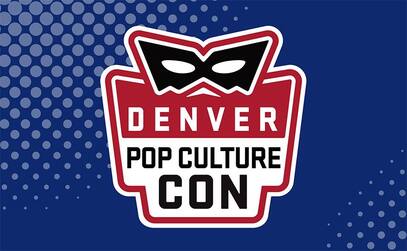 Pitch Perfect: Crafting the Best Book Proposal Saturday June 1, 2019 3:30 pm to 4:20 pm ROOM 601 - Authors Have a story or book you’re working on? Want to know how to put together an elevator pitch? Or even just want to know how not to bore people at parties when they ask you what you're working on? First, the panel will discuss the pitch and how to make them perfect, and then we’ll help out the audience with their pitches. Panelists: Mario Acevedo, Vivian Caethe, Betsy Dornbusch, Travis Heermann, Dean Wyant On Saturday afternoon of Denver Pop Culture Con 2019, a panel of authors assembled to help hopeful storytellers hone their ideas into a short-but-sweet and effective pitch. First, let’s make sure we are clear as to what a pitch is and isn’t. A pitch is not a query letter, which is usually about a page in length. A pitch is also not a synopsis, which usually describes the whole book to the end, but may not include every character and is usually one to two pages long. A pitch is similar to a logline, which is a film industry term, where you describe your film with one sentence (a good place to start is to search, ‘how to make/write a logline’). The pitch is the ‘meat’ of the story. It should include the core elements, with a few important details, told in a few sentences, to create interest and make the person want to know more. Your pitch should be geared towards being verbal and face-to-face, not to say that you can’t put your pitch in print or post it on social media. Think of it as what you would tell someone in an elevator, at a party, or ideally, in an agent’s or editor’s office. First off, it isn’t a Hollywood trailer, so don’t start with, ‘In a world…’ unless it is vital to your story to establish how different your world actually is. Another exception is if you think the location might be a point that your audience would appreciate. For example, if your story takes place in Colorado, and you are pitching your story to people from Colorado, then by all means, mention the setting. The majority of the time, instead of focusing on the world you’ve built, you should focus on the main character(s). Who is our protagonist, and who is our antagonist? When referring to them, don’t use their names, because that won’t give us any information about them, so it just wastes time/space. The name ‘Walter’ doesn’t tell us anything, but if you refer to your main character as ‘a high school chemistry teacher with cancer who secretly cooks crystal meth,’ well, now we are intrigued. It doesn’t need to be that detailed, it could even be as simple as ‘bartender’ or ‘student’ or ‘divorcee.’ This will instantly give a more specific idea of who the character is and what their world is like. There was a little bit of discussion among the panel members about using descriptive terms. Some think that certain details shouldn’t be used, unless you come back later in the pitch to why that detail is relevant, while others think that it doesn’t need to be mentioned again, as long as it is relevant to the overall story, and helps to quickly add depth to the character. Also, make sure to mention the antagonist, so that the cause of the conflict is clear. Instead of saying, ‘our main character must keep his drug business a secret…’ say ‘our main character must keep his drug business a secret from his DEA agent brother-in-law.’ Once you have those two characters locked down, there are four main points you want to make sure to touch upon: (1) What is the protagonist’s goal? (2) What is the motivation to achieve that goal? (3) What is the conflict that the protagonist will face while trying to achieve that goal? (4) What are the stakes of not achieving that goal? And let’s be clear, unless you are writing a story for children, the stakes should be either death or worse than death. Being disappointed or sad if the goal isn’t reached doesn’t count as ‘stakes’ (again, if you’re writing for children, you don’t have to put Elmo in a near-death situation). After you have taken care of those signposts, then you can add some details. Is there a word or two that you could add to quickly define the genre or create interest? If you mention the ‘Space Force,’ it very quickly tells the person you’re pitching to that your story is science fiction and is interplanetary in scope. It can also be important to identify what the genre is because chances are, your listener will want to categorize your pitch… so they can re-sell it. It is a big advantage if you know who your market is so that you don’t discourage yourself pitching a sci-fi story to someone who never reads sci-fi. Another trick is to use loaded words that will instantly give weight to you pitch. Instead of ‘journey’ or ‘quest’ if you use the word ‘crusade,’ we will apply all of the implications associated with that word, setting it apart from a pitch with more vague terminology. One of my own biggest misconceptions about pitches is that I thought you were supposed to hand them your whole story, reduced to a few sentences, with no need for further discussion. This is not the case. You want your pitch to have some “things that make you go, ‘hmm’” in order to intrigue them to the point of wanting to dig deeper, and that’s how you get them on the hook. One way you can do this is to seed the questions that you want people to ask. Include interesting-sounding references to an aspect of your story, in the hopes that they will ask about it, allowing you to delve deeper than what little is allowed in the pitch itself. This can also be a good way to test your story itself. If someone asks you questions about your story, and you can’t answer them, maybe it’s the story that has issues, not the pitch. Some authors might even start with their pitch first. If they can come up with a pitch interesting enough that they would want to read that story, then they can build on that: write the query letter or back-cover copy, then build to the synopsis, etc., all using the original pitch as a guiding light. Another way to get some ideas is to search for other pitches and learn from what they do effectively and ineffectively. Pitch your story to friends and family and encourage them to give honest feedback so that you can improve it further. For more resources, check out Pitch Wars, and follow #writerscommunity on Twitter. Written by Joel T. Lewis 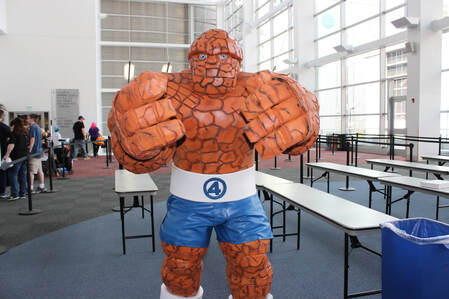 Relocating is difficult for everyone, but especially for a nerd. Relocating and downsizing is especially difficult as it forces us to reanalyze the stuff-i-fication of our fandoms and reprioritize collections that might have spiraled out of control. My partner and I moved 2 weeks prior to this year’s Denver Pop Culture Con from a roomy if haphazardly laid out 2-bedroom apartment with massive closet space into a much nicer one bedroom apartment. The existential (and literal) weight of my collections was crippling as I was faced with the task of moving everything I had collected to our new home and then finding space for it to live in once it was moved. No collection weighed more heavily on my mind than my comic books. One longbox and 4 short boxes is not the most extensive collection, but with time and space running short, the collection had to be culled, and more than a month later and a short box and a half lighter the process continues. As I fluctuated from aggressive minimalism and materialistic mourning, I entered Denver Pop Culture Con with a familiar sense of fiscal irresponsibility as I strolled longingly through the stretches of Artist’s Alley and Merchant Mesa. But this year that longing was tempered by a dull ache, the still tender remembrance that there was no place to put the nerd stuff I so desperately wanted. If my comic’s collection had been respectable before, it was the Denver Comic Cons of the past few years that helped it grow robust. The booths of comic sellers from all over the country introduced me to the concept of ‘bricking,’ selling complete runs of comics together in a cellophane brick, effectively kryptonite for an impressionable collector whose wish list was vast and seemingly insurmountable. Buying comics this way I discovered underappreciated gems (Propeller Man 1993 1-8), filled massive gaps in my collection (Marc Spector: Moon Knight 1989 1-50), and went down rabbit holes that I eventually had to dig my way out of (Supreme Power 2003 1-18). But buying by the brick wasn’t the only habit I developed that needed to be overcome, I had to unlearn ‘Buying Spite.’ This is one of the more frustrating habits I picked up, dazzled by the abundance of long boxes and vendors at conventions. It is best represented by my experience last year. I was desperately searching for Daredevil (1964) issue 191, my interest peaked by a response Jeff Lemire gave in a panel just a few weeks earlier. He was asked about the comics that shaped his fascination with the medium and he answered that the famous ‘Roulette’ issue of Daredevil had shown him how serious comic book storytelling could be, and shameless Lemire fanboy that I am, I had to hold in my hand the issue that very well may have spurred my favorite author to create comics himself. Digital spreadsheet in hand, I scoured the booths searching for the issue with Frank Miller’s sunset lit man without fear, crouched like an anguished yellow gargoyle on the cover. Finally triumphant I bought the book in an elated haze paying no mind to the price on the cover. Fast forward to ten minutes later and 3 booths further down the aisle where I found 2 more copies of the same issue, at half the price. As the haze of retail endorphins lifted and was rapidly eclipsed by frustration at my own impatience I doubled down literally, snapping up a second copy of the issue at the lower price. Can I explain this bizarre impulse? I cannot. But it has not been an isolated incident and is an impulse I’ve worked hard to resist. Hot on the heels of moving and the first wave of my collection reduction, I began to develop an inquiry process aimed at the very heart of collecting physical comic books, which was as uncomfortable as it was revealing. On what basis do I choose issues? First and foremost, my selection of physical issues comes from falling in love with the cover art. I’ve stuck with and begun reading series midway through on the basis of cover art alone. This is the strongest pull for me to pick up a book from my local comic shop. Though I do decide to follow specific series on the basis of character, creative team, and storyline, I have bought more issues on the basis of their cover art than any other motivating factor. But what is the advantage of owning an issue on the basis of its cover art alone? This led me to another question: What is the end goal for owning any issue physically instead of digitally? What I began to discover was that my desire to own issues or trades of comics physically was motivated by 3 factors: First, I liked the cover art and wanted to display it, second I enjoyed the story and wanted to lend the issues to my friends, and third I wanted to someday have the issues signed by the artist or author. I realized that in most cases I wasn’t even buying these comics physically for myself or so that I could read them again in the future. I found that these motivations for my physical collection were not sustainable or substantial enough for me to allow them to continue to influence my collecting. 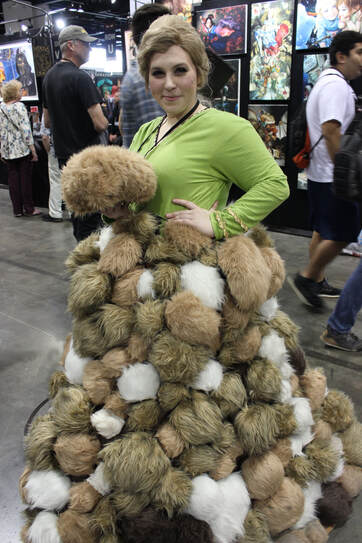 I also became disappointed with the life cycle of my comic books. The initial excitement of picking out the titles and devouring that week’s storyline ultimately undermined by the inevitable banishment of those books to the sad dusty dark purgatory of the short box, shut away from view out of spatial necessity. Especially with Marvel Comics including digital download codes with their physical issues the likelihood of those issues emerging from their cardboard prison continued to decrease. So I was buying issues to put in a box, to await being leant to a friend, or to go into a frame signed or not, never to be opened or read again. I was in this soul-searching state as I walked the exhibition hall of this year’s Denver Pop Culture Con, wincing as my body struggled to come to grips with my collector’s desire and my newfound understanding of what my comics collection had become. This year was a financial triumph for me, resisting the call of UltraSaber’s enticing mystery box deal, and the oh so satisfying feel of Gravity Dice tumbling from my fingers. I spent an unprecedented $30, with the majority of that figure coming late on the final day of the con. This would have been inconceivable to me even a few years ago as I scrambled to complete my Marc Spector: Moon Knight run and pursued the first appearance of the jet and silver avenger in Werewolf By Night number 32. This year I did spent all of that money on comics, but in a tempered and measured headspace, not a fevered desperation as in previous years. I scoped out the booths the first and second days, snapping pictures of issues I was thinking of getting, taking note of the weight they would lift from my wallet, and add to my short boxes. There is something in me that wants to own comic books physically, to support the creators in a way that I get something tangible to show them and have them sign if I get to meet them, to have something to point to when my friends come over or ask for a recommendation. I think there’s a way to do that without breaking the bank, and without cluttering your space to the point where you can’t live comfortably. This is the balance I’m working hard to establish and my experience at this year’s Denver Pop Culture Con was a big step towards reaching that goal. Is there a collection you’ve had to cut back? Do you have anti-clutter strategies you’d like to share? If you want to shoot me a tweet or drop a comment below, I’d love to hear your thoughts on the nerd’s perpetual struggle with stuff. Until Next Time, Geek On! Written by Tim Girard 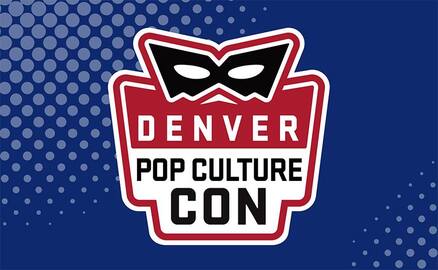 From Script to Screen: How to Make Movies Friday May 31, 2019 7:30 pm to 8:20 pm ROOM 504 - Reel Heroes Have a dream in film, but not sure where to start? This panel is for you. Learn the process of filmmaking from pre-production to production to post-production. Learn every aspect of the filmmaking process and you'll be ready to make your own movie. Want to be a writer, actor/actress, director, cinematographer, or anything else film related? Please join us to learn how to take that step to get your movie made. Panelists: Chelley Canales, Cory Rowe, Mikayla Roberts, Timothy Lee, Sarah Del Rio On Friday night of the newly-rebranded Denver Pop Culture Con 2019 I was looking for some info on how to break into filmmaking, and I was given plenty of advice and inspiration at my first panel, From Script to Screen: How to Make Movies. In the panel, mediator Chelley Canales asked questions of Cory Rowe along with a few key members of his crew, about their experiences on the road to filmmaking. When Cory was 15, he went with a friend to a $1 movie theater. He wrote his first script later that same night... which he says was terrible. Since then he has directed 5 short films including Euphorium: Genesis. Cory’s ‘right hand’ Mikayla Roberts became interested in film while attending the University of Northern Colorado and met Cory in a Facebook group. She is the Assistant Director and Organizer for Euphorium: Genesis. After serving our country in the military for 11 years, Timothy Lee found a new path in filmmaking and attended the Los Angeles Film School, where he met Cory. He is the cinematographer for Euphorium: Genesis. Sarah Del Rio is an actress who also performs stunts and actually met Cory during an audition for a different film. She has always wanted to act, and finally stopped listening to naysayers and pursued her dream. She plays the lead role in Euphorium: Genesis. How do you find the time to balance life and your passion? Cory says that if you have a job that is Monday through Friday, you will have to utilize your weekends for whatever project(s) you want to work on. This can mean sacrificing time you could spend elsewhere, but if your passion is that important, then you won’t let anything stop you. Fortunately, Mikayla’s parents are very supportive, and she is able to have a part-time job so that she can make time for film. Sarah says that she sets clear boundaries. As a mother, she is attentive to all of her responsibilities, but she also makes sure to put aside the time that she needs for herself. What should someone do if they thought to themselves, ‘I have an idea for a movie?’ Cory says to start with the script, and if you can’t write, then find someone who can. Talk to any of your friends who might want to write, and if you don’t have any, then reach out through social media groups, but either way, make sure your script is well-written. Then assemble your cast and crew. Again, start with friends who are interested in your passion project, but don’t be afraid to look online to expand your crew beyond who you already know. There are plenty of people out there who would love to work on a project, but may not know anyone with inspiring ideas. Once you have a more complete idea of the project, then you can start crowd-funding (Cory had more to say on this topic later on). When your vision is more solidified and you are getting closer to filming, start scouting locations, but try to be more creative than just using your own house. There are plenty of free options, like parks or out in the woods, but you can also see if any local businesses would be interested in letting you film there (it might be good for their business!). Once you have all of those pieces, assemble your cast and crew sheets, so everyone knows where they need to be and when. Then start filming! What do you recommend for equipment? Cory says you can just use your phone. Most of the higher-end smartphones are capable of shooting 4K video. Sarah said that she’s seen some shots done on an iPhone, and they looked fantastic. If you want your sound to be a little bit better, you can get a Rode microphone for your smartphone. Also, you can look on FilmFreeway, enter film festivals that are specifically geared towards films made with smartphones, and you could possibly win prize money that you could use to purchase better equipment! How do you get funding for your films? Probably the best way in this day and age is through crowdfunding. Cory uses Seed & Spark which he says is better than Kickstarter or Indiegogo (check out Euphorium: Genesis on Seed & Spark). An important part of your campaign is having a trailer. Cory suggests making two contrasting trailers for your film, like he did for Euphorium: Genesis (which he showed us during the panel). His first trailer was intense, to get the audience excited, but the second one was more emotional, to draw people in. Also, once you think your campaign is ready to publish… wait 3 to 4 weeks before you launch. Give yourself time, in case there are things that you haven’t thought of yet. Have your friends and family look at it and see if they have any questions, comments, or suggestions that might help improve your pitch, so that it is the best it can possibly be before you go live. What is the most important piece of advice you can give? Sarah says to not be afraid to fail. In certain types of fitness, they ‘train to failure’ which means that they don’t stop until they fail. You shouldn’t be discouraged by failure, because failure is just part of the process. Timothy says that you should be flexible and ready to change. You should plan and be prepared for the situation that you are going into, but things won’t always go according to plan. You are probably going to have unexpected challenges pop up along the way, and you should be ready to adjust and adapt to those situations. Mikayla says to be a ‘yes person.’ By having a good attitude, and doing what you’re asked to do, people will learn that you are reliable and great to work with. However, this doesn’t mean you have to put up with whatever situation you are in, no matter how bad it gets. Don’t be afraid to pull out if it is a genuinely bad project. Cory’s advice may not be easy, but it is simple: Don’t stop dreaming - Fail, but keep going. The audience Q&A section of the panel began with some elaboration on earlier concepts. What advice do you have for aspiring directors? Cory suggested reading as many books as you can on the various aspects of filmmaking, so you can be well versed in how all of the roles come together. He also recommended the MasterClass online course on directing taught by Ron Howard. Also, a helpful tip to keep yourself organized is to use Excel spreadsheets for all of your information about scenes, locations, actors/actresses, etc., then access these spreadsheets from a tablet so that it is portable. Then Cory and Timothy had some discussion about the relationship between the director and cinematographer of a film. The director may have a visual idea that they will bring to the cinematographer. It’s the cinematographer’s job to hone that idea, based on expertise (education, prior experience, understanding the equipment, etc.) and hopefully a sense of adventure to try something new. Ultimately, however, it is the director’s vision that the cinematographer must be helping to achieve. The same could also be said for working with actors/actresses. What is some equipment you would recommend? Cory says that for editing, something as simple as Windows Video Editor, VideoPad Video Editor, or Adobe Creative Cloud. If you have some money to spend, then get a good lighting kit, but make sure your cinematographer knows what they are doing. If you had to spend money on only one thing, however, Cory recommends spending it on your cast and crew. If you can keep them happy with food and other amenities, they will feel appreciated and be more likely to give you 110% if shooting runs late, or into additional days, etc. If you could be a fly on the wall for any director’s production who and what would it be? Cory would want to observe any and all of the films by Ron Howard, Christopher Nolan, and Quenitn Tarantino. Mikayla would have loved to observe the productions of Marvel’s Avengers: Infinity War and Endgame. She would want to see how projects that massive were achieved and how all of the moving parts were orchestrated. Timothy chose his favorite director, Ridley Scott, and Sarah chose her favorite director, Tim Burton. For more information, go to Cory’s website (5280 Film Company, LLC) or email him (info@5280FilmCompany.com). Tell him Tim from Nerds That Geek sent ya! Written by Zeke Perez Jr. 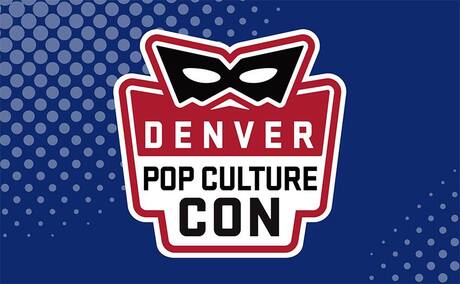 Cue the Law and Order *thunk thunk* sound. Denver Pop Culture Con 2019 was home to a series of very intense, very serious legal discussions. Down in the Coast City room, a bunch of nerdy lawyers gathered for a handful of panels where pop culture’s biggest icons were put on trial. Taking the stand throughout the weekend were characters and moments from Star Wars, Star Trek, the Godzilla universe, and the Marvel Cinematic Universe. I served as a spectator in the proverbial courtroom for those last two panels, as the panelists discussed the implications of fictional destruction of real-world settings. Each of the panels was hosted by members of “The Legal Geeks”, practicing attorneys who love to geek out on The Legal Geeks blog and podcast in their spare time. On Saturday, Joshua Gilliland, co-creator of The Legal Geeks, was joined by Nari Ely to tackle “Kaiju Law”. The duo dove into a series of legal matters surrounding Godzilla, Mothra, King Ghidorah, Gamera, King Kong, and more. My two favorite discussion topics pondered whether the president needs congressional approval to go to war with Godzilla and whether the U.S. has a treaty obligation to defend Japan from Godzilla attacks. I went back for more on Sunday, dropping in for the panel about law in the MCU. This one warranted a star-studded legal team; Gilliland and Ely were back, but this time they brought Bethany Bengfort (U.S. Courts), Mollybeth Kocialski (U.S. Patent and Trademark Office), Mark A. Lemley (Stanford Law School), and… drumroll please… Colorado Attorney General Phil Weiser! These legal minds delved into a whirlwind of fiery debate about everything Marvel. Was Tony Stark’s use of Spider-Man child endangerment? Does Star-Lord have a rightful claim to ownership over the Infinity Stone he found on Morag? Could Thanos be prosecuted for his snap? And who gets all the property left abandoned by that snap? The Sokovia Accords? All the damage done in all the battles? There are real legal ramifications to the Avengers’ actions and The Legal Geeks team got to the bottom of them in hilarious fashion. These panels truly lived up to Pop Culture Classroom’s mission, by making U.S. statutes, world treaties, and high court legal rulings fun and engaging to talk about. It is very obvious that the panelists love what they do – both for work and for play. Their passion was on display during the sessions and is evident in each blog post on their website (all of which are an absolute blast to read). When you can rope the state’s attorney general in for a day of nerdy legal fun, you know you’ve got a winner of a panel. I also appreciated that DPCC packaged The Legal Geeks’ sessions as a track throughout the course of the weekend. It was nice to follow a series of panels with one common theme (law) as they journeyed through several different pop culture topics (Godzilla, Marvel, etc.). DPCC accomplished this with other threads, too. For example, they had a series of NASA presentations, a set of Shakespearean Star Wars performances, and various March Madness-style tournaments where different movie characters and franchises faced off. Themes like these brought consistency in panels throughout the convention. The law panels are just one example of DPCC and Pop Culture Classroom accomplishing their goal of making topics accessible through pop culture. I sat through a seemingly endless number of courses about Supreme Court rulings and legal policy when I was getting my Public Policy degrees. Those courses could have used some sprucing up from The Legal Geeks. While the panels did get a bit in the weeds at times, they were engaging and understandable overall – not to mention, quite a lot of fun! If any of the topics from the panels mentioned above got you thinking, be sure to check out The Legal Geeks blog for a ton of entertaining discussions. Many of the topics from DPCC can be found in blog form there, as well as coverage of everything from Daredevil and Agents of S.H.I.E.L.D. to Supergirl and Star Trek. Exploring the law with The Legal Geeks will be the most fun you’ve ever had with an attorney. |
Archives
October 2024
|
|
© 2012-2024, Nerds That Geek LLC.
All Rights Reserved. |
uWeb Hosting by FatCow


 RSS Feed
RSS Feed